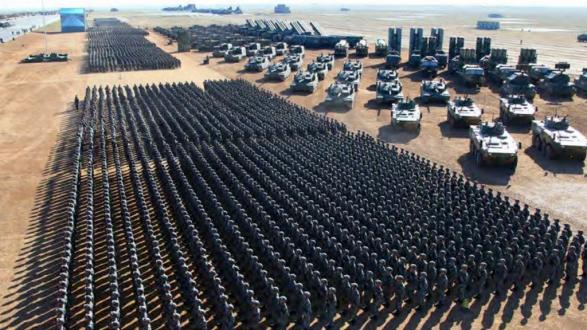
A new Department of Defense (DoD) report has sparked concerns over China’s rapid military expansion. One expert compared the country’s military buildup to that of a major world power in the 1930s. The report details significant advancements in China’s arsenal and its pursuit of “mind dominance” through psychological warfare, raising questions about the balance of power in the global arena and the potential for future conflicts.
Expert Voices Concerns About China’s Military Buildup
A retired Army lieutenant colonel and the chief national initiatives officer at the Texas Public Policy Foundation have voiced serious concerns about China’s military ambitions. He recently expressed his concern during a television appearance, stating that China is engaging in an unprecedented military build-up the world hasn’t seen since a similar one in the first half of the 20th century, which sparked World War 2.
The expert highlighted the differences between China’s naval-focused strategy and the land power emphasis of a previous era. He explained that while land power is easier to build up quickly, navies are much more difficult. He asserted that the United States is behind and needs to catch up, modernize its nuclear weapons, and invest in missile defense.
China’s Nuclear Arsenal and Naval Power
According to the DoD report, China is on track to significantly increase its nuclear arsenal, with projections indicating at least 1,000 warheads by 2030. The expert expressed his concern about these numbers and added that the actual quantity of nuclear warheads may be even higher than projected.
The report also reveals that China’s People’s Liberation Army Rocket Force (PLARF) has added hundreds of new intercontinental ballistic missiles (ICBMs) capable of striking the continental United States. Additionally, China has bolstered its arsenal with hundreds of medium-range ballistic missiles and long-range cruise missiles.
China already boasts the largest navy in the world by the number of ships. The DoD report indicates that China’s navy is expected to grow from its current size to over 400 ships and submarines by 2030. The expert emphasized the disparity in shipbuilding capacity, stating that China’s capacity is significantly greater than that of the United States.
‘Mind Dominance’: China’s Pursuit of Cognitive Domain Operations
Beyond the conventional military advancements, the DoD report sheds light on China’s efforts to develop Cognitive Domain Operations (CDO), which it describes as the next evolution of psychological warfare. CDO integrates traditional psychological warfare tactics with modern internet technologies, AI, big data, brain science, and neuroscience.
The report explains that CDO’s goal is to achieve what the Chinese military refers to as “mind dominance.” This involves using information to influence public opinion and affect change in a nation’s social system, creating an environment favorable to China and reducing resistance to its military actions.
The report suggests that the Chinese military intends to use CDO as an asymmetric capability to deter U.S. or third-party intervention in potential conflicts, shape perceptions, and polarize societies. This approach reflects China’s broader strategy of leveraging information and technology to achieve its strategic goals.
Implications for U.S. Defense Strategy
The DoD report’s findings have prompted calls for a reassessment of U.S. defense priorities. The report’s revelations about China’s military advancements and its pursuit of “mind dominance” underscore the evolving nature of warfare and the challenges facing the United States. As China continues to expand its military might and develop new forms of warfare, the U.S. must adapt its defense strategy to address these emerging threats.
